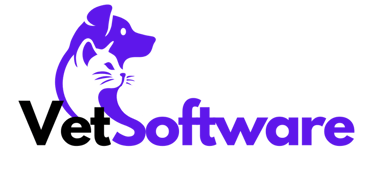
E-Invoicing for Veterinary Clinics in Malaysia: What You Need to Know (2025)
Malaysia’s e-Invoicing mandate is rolling out, and vet clinics are included. Here’s what clinics need to know about the MyInvois system, compliance deadlines, and what to prepare in 2025.


E-Invoicing for Veterinary Clinics in Malaysia: What You Need to Know
Veterinary clinics in Malaysia are now part of a national push toward full digital invoicing. As of 2025, the Inland Revenue Board (LHDN) has begun phasing in mandatory e-Invoicing, and all businesses, including veterinary practices, will be required to comply by January 2026.
This change affects how clinics issue invoices, track payments, and report revenue. It’s not just a software upgrade, it’s a shift in how financial documentation is structured, submitted, and stored. Clinics still using paper receipts, generic POS systems, or non-compliant billing tools will need to rethink their setup.
Here’s what veterinary clinics in Malaysia need to know now to stay ahead of the curve.
What Is E-Invoicing and How Does It Work?
Under LHDN’s new system, an e-Invoice isn’t just a PDF or printed receipt, it’s a structured digital document submitted in real-time to the government’s MyInvois portal.
The basic flow looks like this:
The clinic generates an invoice in its system
That invoice is sent directly to MyInvois for validation
Once validated, it’s returned with a unique document number and QR code
The validated invoice is then shared with the client
This process standardises how sales are recorded and reported. It applies whether you’re charging for a consultation, selling medication, or invoicing a client for a full surgery package.
The goal is to improve tax compliance, prevent underreporting, and digitise the entire ecosystem of business transactions in Malaysia.
Who Needs to Comply and When?
The e-Invoicing rollout is being phased in based on annual turnover:
August 2024: Businesses with annual revenue above RM100 million
January 2025: Revenue above RM25 million
January 2026: All businesses, regardless of size
That final tier includes independent veterinary clinics, mobile practices, and even small animal hospitals. There are no industry exemptions.
If your clinic isn’t yet above the earlier thresholds, it’s still important to prepare now. Switching last-minute could disrupt billing and create unnecessary risk.
What Information Will Be Required on E-Invoices?
To comply, invoices will need to include:
Buyer’s name and tax identification (if available)
Seller’s business registration number (SSM)
Description of services or products
Itemised pricing, tax breakdowns, and total
A unique document ID (generated post-validation)
A QR code linked to the LHDN MyInvois record
For walk-in clients or those without tax IDs, simplified formats can be used, but clinics must still issue and validate through the MyInvois system.
This means your clinic management software must be able to collect, structure, and transmit data in the required format.
Does Your Current CMS Support E-Invoicing?
Not all veterinary CMS platforms are currently integrated with MyInvois, but many are preparing for it.
Here’s what to look for in your existing or prospective software:
A clear product roadmap for e-Invoicing readiness
Structured invoice templates that match LHDN requirements
Real-time or API-based integration with MyInvois
Automatic validation and QR code generation
Support for buyer data fields (including optional TIN)
Reporting tools to reconcile validated invoices and payments
Some platforms may not yet have these features live, but if you’re evaluating vendors, this should be part of the discussion.
Ask them:
Will your system be compliant by 2026?
Will support for e-Invoicing be included in current plans, or priced separately?
What is the workflow for invoice validation?
Choosing a CMS without this in place may mean additional software layers later, manual uploads, or time-consuming workarounds.
How Should Clinics Start Preparing?
If your clinic isn’t already using a digital clinic management system, the first step is to implement one that can eventually handle e-Invoicing.
If you’re already digital, then now is the time to:
Review your current invoicing process: How do you create, store, and issue invoices today?
Clean up client data: Start capturing full names, emails, and tax IDs where available
Talk to your software provider: Confirm their timeline and support for MyInvois integration
Train your team: Staff should understand how e-Invoicing works, especially for over-the-counter payments and walk-ins
This preparation doesn’t have to be overwhelming, but ignoring it until 2026 will create pressure later.
What About Receipts and OTC Transactions?
E-Invoicing isn’t just for end-of-month business clients or referral hospitals. It applies to:
Vaccination receipts
Product sales
Outpatient visits
Emergency care
Boarding or daycare if offered by the clinic
Each sale or service rendered must be recorded as a validated e-Invoice. Even if a pet owner pays cash and doesn’t want a receipt, the transaction still requires back-end validation through MyInvois.
For that reason, your billing system must be fast, seamless, and well-integrated, otherwise, your front desk workflow could be severely impacted.
Preparing Your Veterinary Clinic for E-Invoicing in 2025
For Malaysian veterinary clinics, e-Invoicing is not just a technical update, it’s a change in how you handle financial transparency and client documentation. The earlier you adapt, the smoother the process will be.
Look for systems that are aligned with Malaysia’s roadmap. Clean up your data, check your workflows, and speak to your vendor about their MyInvois strategy. By getting ahead of the compliance curve, you’ll avoid rushed transitions and protect your clinic from disruption in 2026.
Next Steps for Clinics Reviewing E-Invoicing Software
The shift to e-Invoicing is mandatory, but how you adapt is up to you. Start reviewing your clinic management system now and confirm if the tools you use are ready to support Malaysia’s digital tax infrastructure.
If you’re in the market for new software, ask pointed questions about validation workflows, QR code handling, and invoice structuring. This isn’t just a feature, it’s a legal requirement.
Stay updated with the latest veterinary software trends.
© 2025. All rights reserved.
